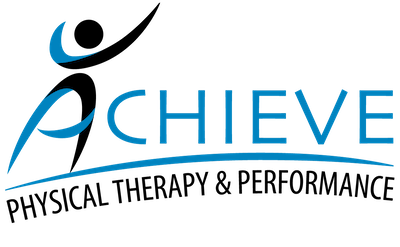
Golfer’s Elbow
What is Golfer’s Elbow?
Golfer’s elbow, medically known as medial epicondylitis, is a common condition that causes pain and inflammation on the inside of the elbow. Although it is often associated with golfers, it can affect anyone who performs repetitive gripping or wrist flexion activities. Individuals between the ages of 30 and 50 are more prone to golfer’s elbow. Moreover, men are generally more at risk than women.
While golfers can indeed develop this condition, golfer’s elbow is not exclusive to them. Several other groups of people are particularly susceptible to experiencing this painful condition:
- Athletes: Besides golfers, other athletes engaged in sports requiring repetitive wrist flexions and gripping movements, such as tennis players, baseball players, and weightlifters, are at risk of developing golfer’s elbow.
- Manual Laborers: Occupations that involve repetitive hand and wrist movements, like carpenters, plumbers, painters, and assembly line workers, can contribute to the development of golfer’s elbow.
- Office Workers: People who spend long hours typing on a keyboard or using a mouse may also experience golfer’s elbow due to constant wrist movement and gripping.
What is Causing Your Elbow Pain?
Golfer’s Elbow (Medial epicondylitis) affects the group of muscles that are responsible for bending the wrist, fingers, and thumb and that rotate the wrist and forearm. The tendons that connect those muscles to the medial epicondyle (bump on inside of elbow). Tendons are made up of collagen fibers that are lined up next to each other. The repetitive forces pull on those tendons creating pain and tenderness described as Golfer’s Elbow. Without treatment, those tendons can eventually pull away from the bone. Acute injuries to your elbow can create an inflammatory response which can cause redness, warmth, and stiffness in your elbow.
Golfer’s Elbow (Medial epicondylitis) is most often caused by an abnormal arrangement of collagen fibers. This condition is called tendinosis. You can read more about tendinosis here.
How Physical Therapy Can Help with Golfer’s Elbow
- Pain Management: this can include Mechanical Diagnosis & Therapy, ice, ice massage, moist heat, electrical stimulation, and ultrasound.
- Range-of-Motion Exercises: stretches and mobility exercises to help maintain proper movement in your elbow, forearm, wrist, and hand.
- Strengthening Exercises: progressive resistive exercises to help build strength in your arm, elbow, forearm, wrist, and hand. These can include weights, medicine balls, and/or resistance bands. This will also include your Home Exercise Program.
- Manual Therapy: used to ensure full, pain-free movement is achieved and can include joint mobilizations, manual muscle stretches, and soft tissue massage.
- Neuromuscular Re-education (Functional Training): used to help you return to your prior level of function for both home and work activities. This will include retraining proper movement patterns with necessary modifications based on the current level of function and patient limitations.
- Patient Education: used to help retrain patients on proper postural control during everyday activities including dressing, self-care, work, and sports activities. This can include helping return a patient to their specific sport, such as making adjustments to their golf swing or throwing technique.
A physical therapist can assist you in improving your pain and correcting your body’s deficits. These golf stretches will make your golf game less painful and reduce those extra strokes:
Hamstring Stretch
(move from upright into stretch position 10x)

Back Extension Stretch
(hold club backwards overhead, repeat 10x)
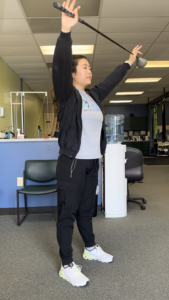
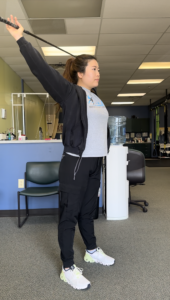
Hip/Back/Shoulder Rotation Stretch
(hold club behind back and rotate torso to each side 10x)
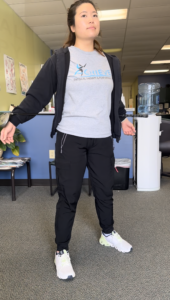
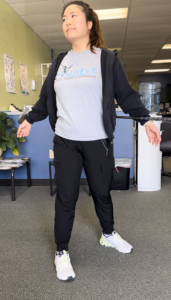
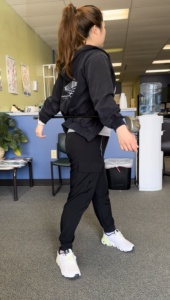
Calf Stretch
(move from upright into stretched position 10x)
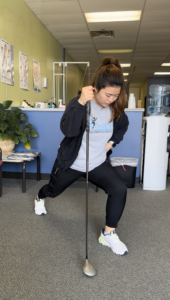
Lumbar Spine Rotation
(hold the club, plant feet as shown, and rotate to each side 10x)

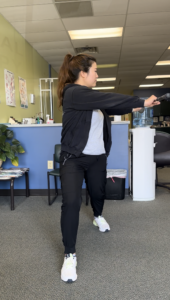


Forearm Rotation
(hold club straight up, then rotate to each side 10x)

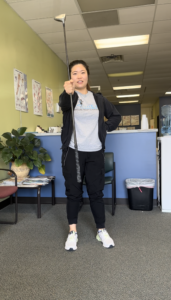
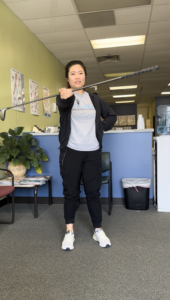
Once you’ve completed physical therapy for Golfer’s Elbow, you’ll want to do everything you can to prevent this from reoccurring. This can occur by maintaining proper awareness of your risk for injury during your daily movements.
Key things to keep in mind:
- Maintain proper form during all repetitive movements both at work and at home.
- Continue your Home Exercise Program in order to maintain proper strength in your shoulder, elbow, forearm, wrist, and hand.
- Use proper posture and body mechanics with lifting or carrying to avoid any undue stress on your joints and tendons.
